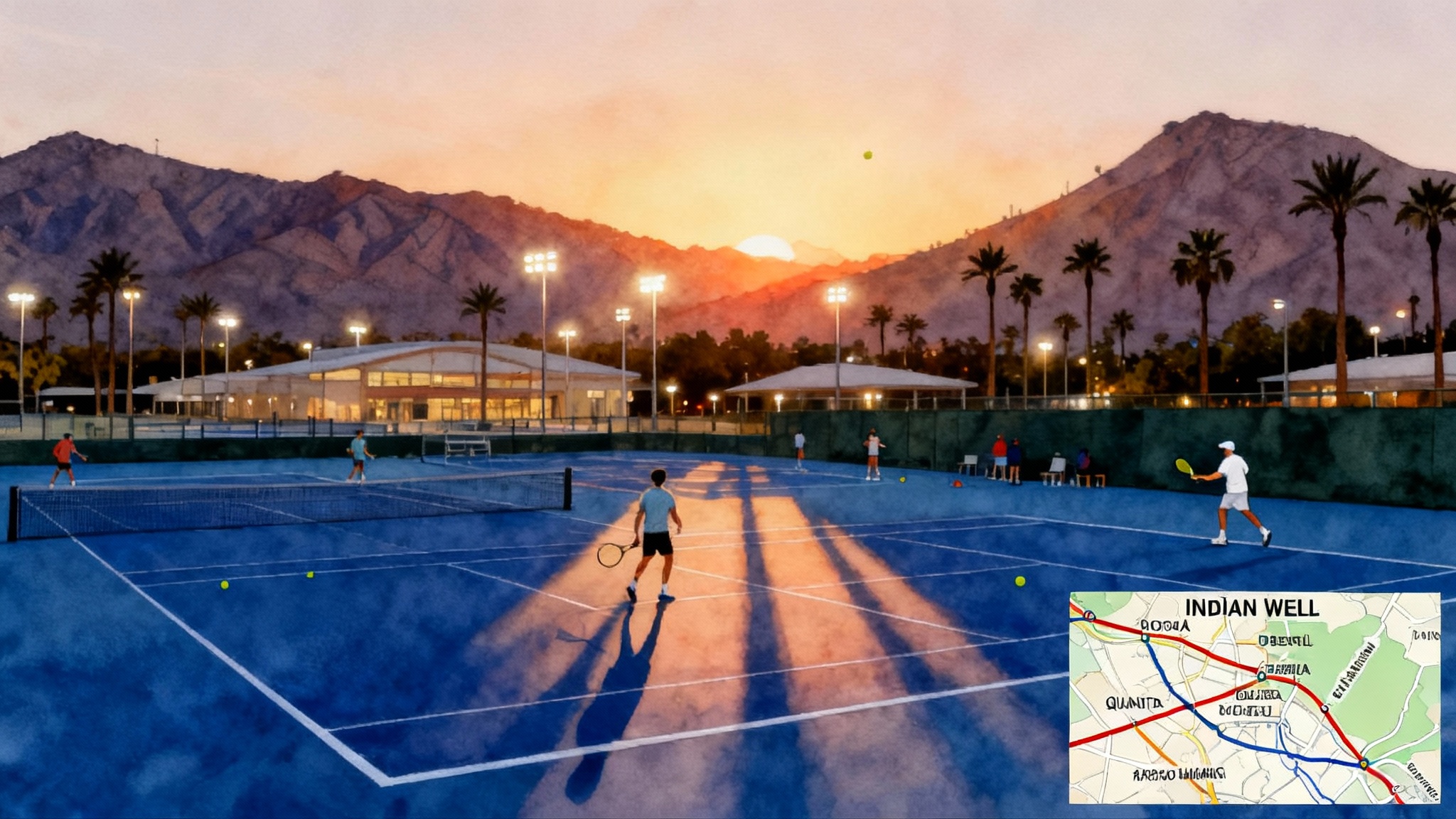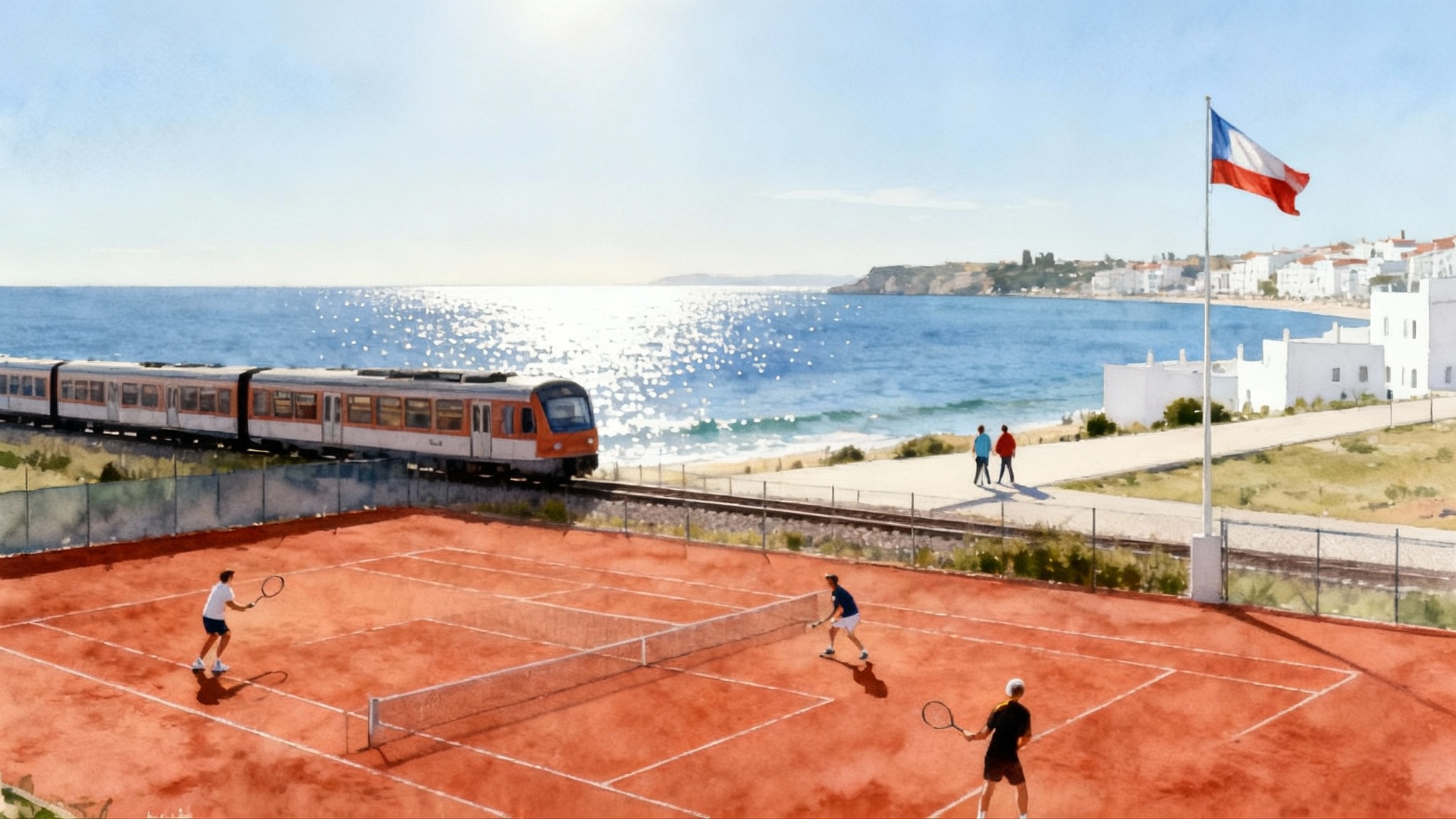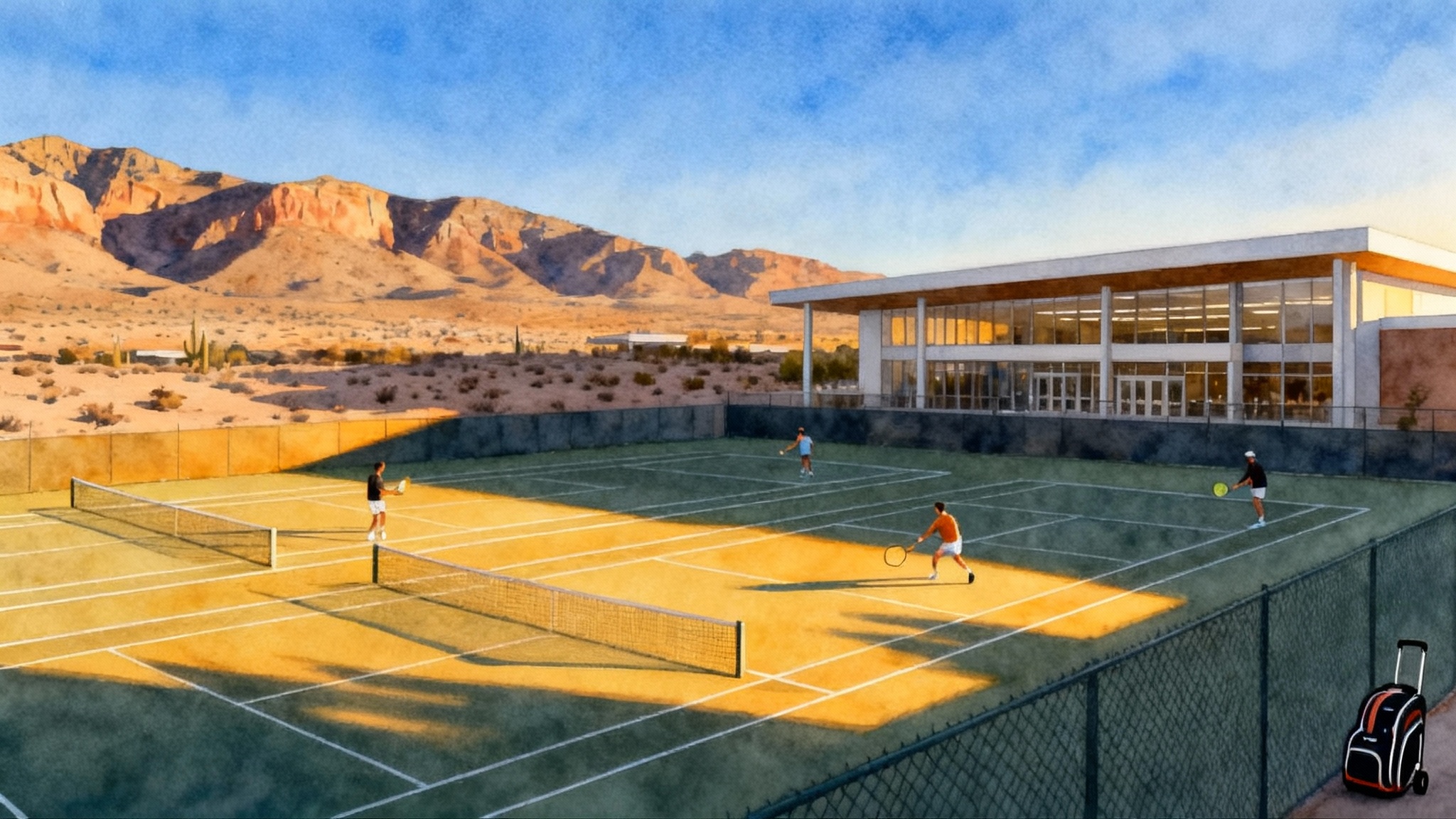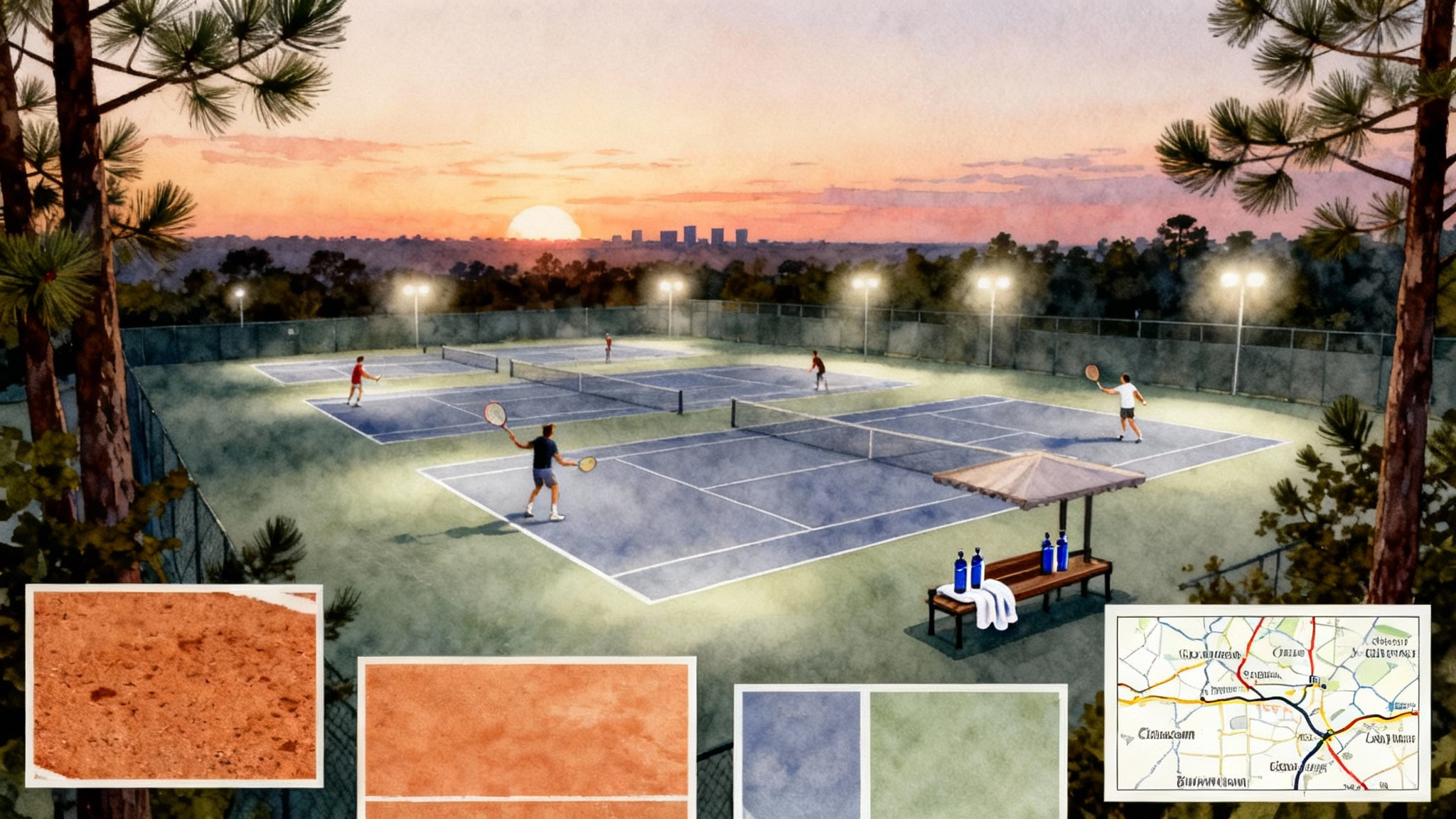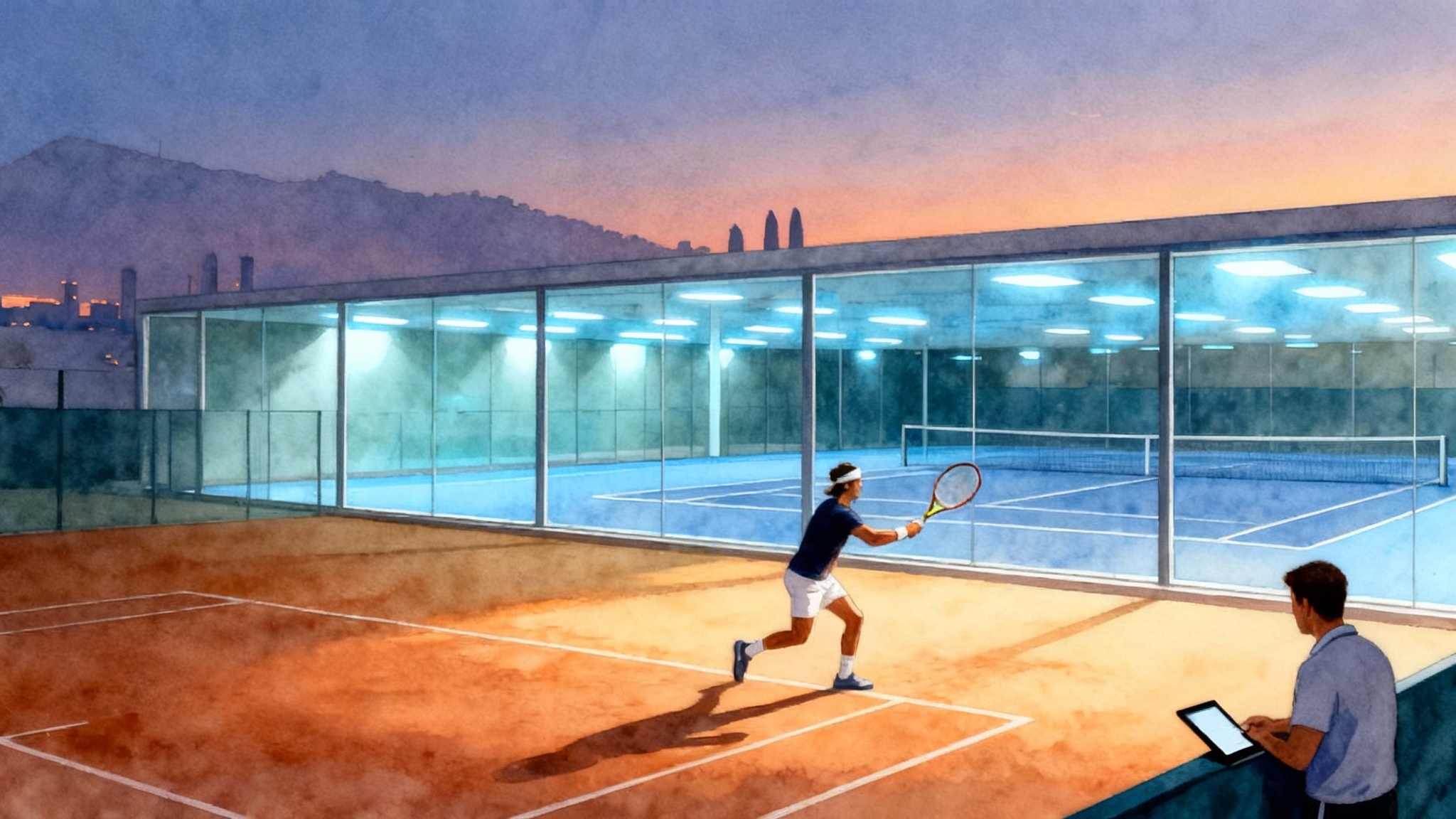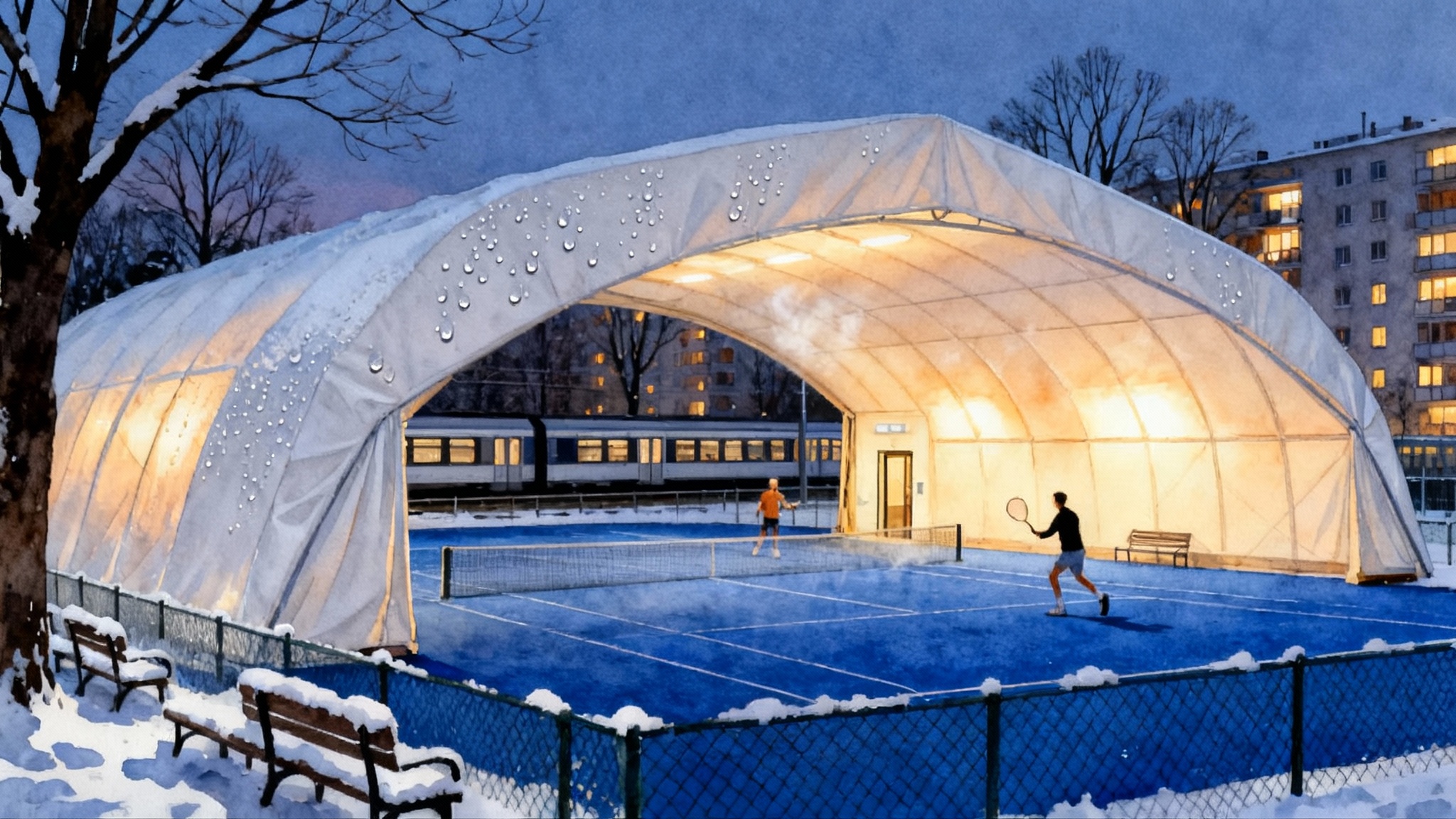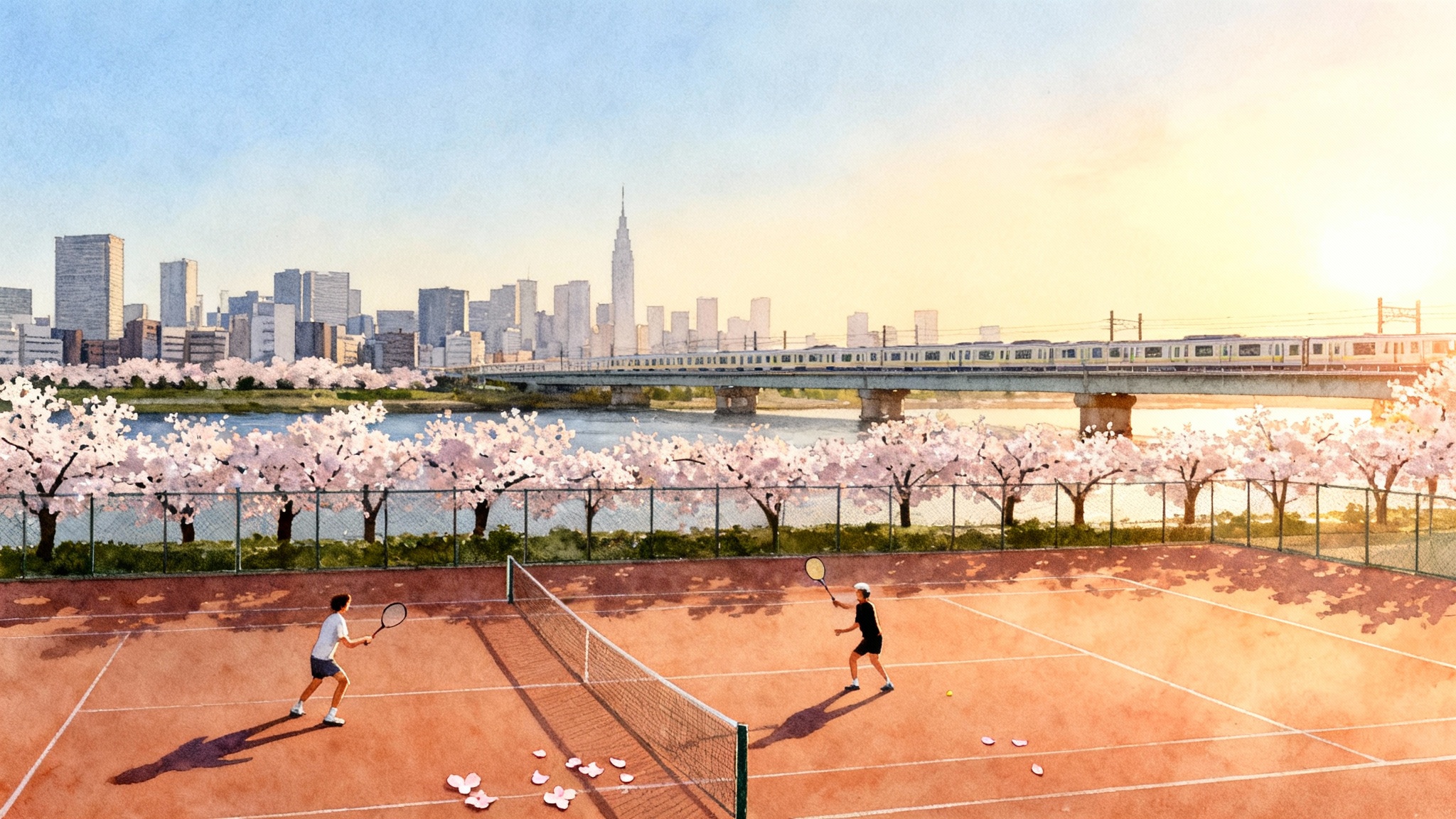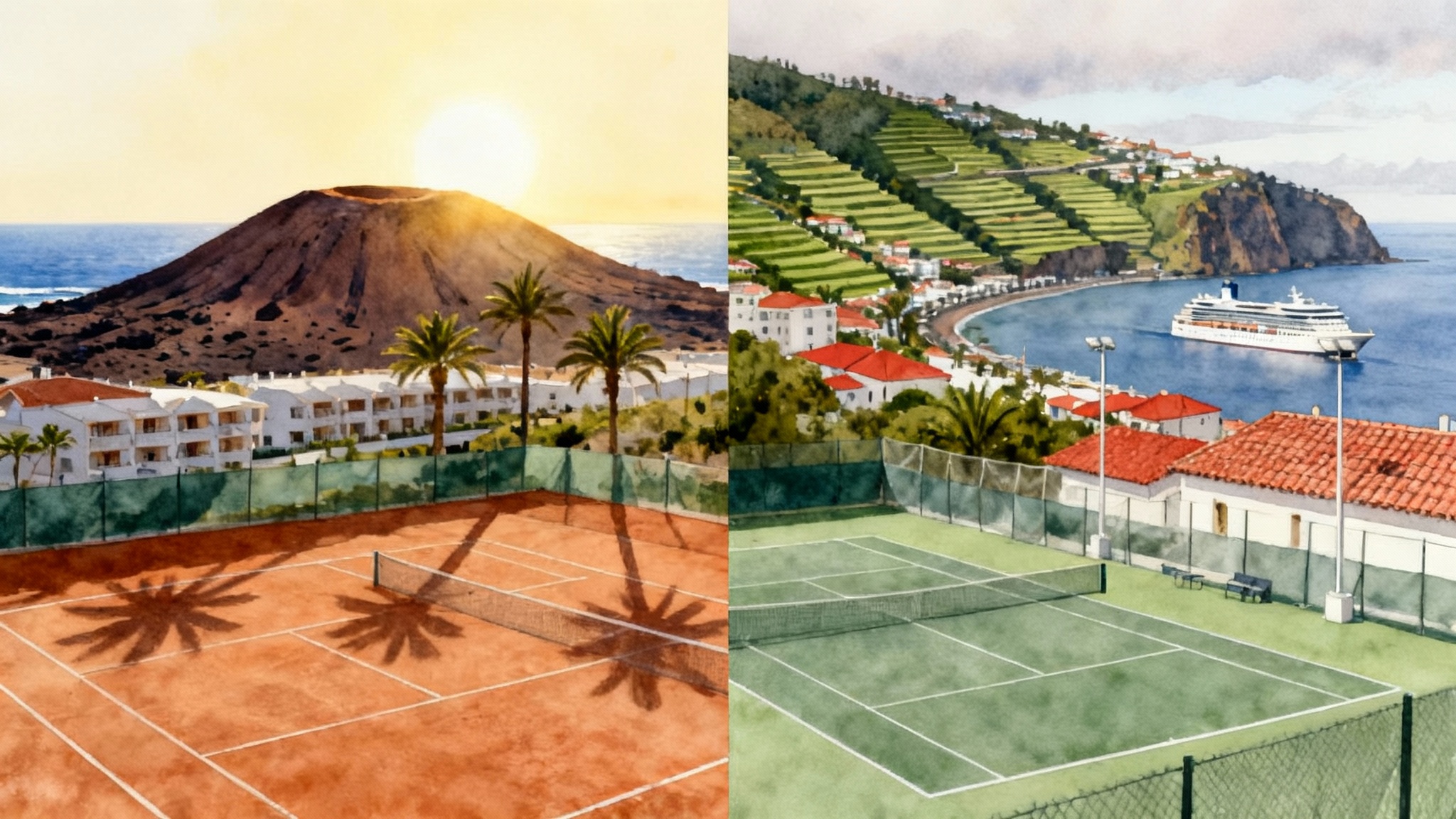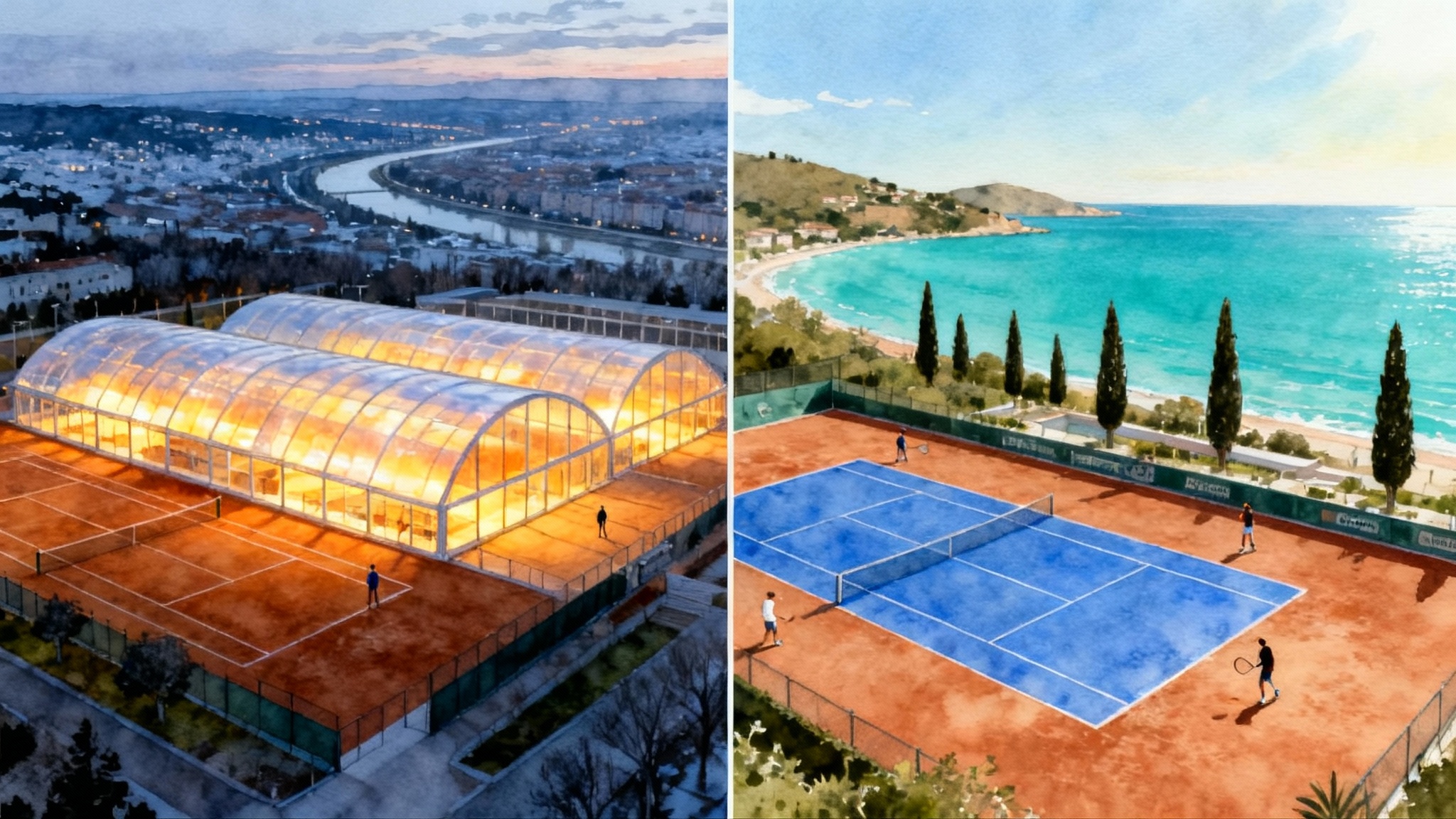Monsoon-Smart Tennis 2025–26 in Manila, Phuket, and Bali
Build a winter tennis block around Southeast Asia’s dry-season windows. This climate-first guide shows when to go, where to find covered courts, how to tie in UTR and ITF events, what it costs, and the gear tweaks heat demands.
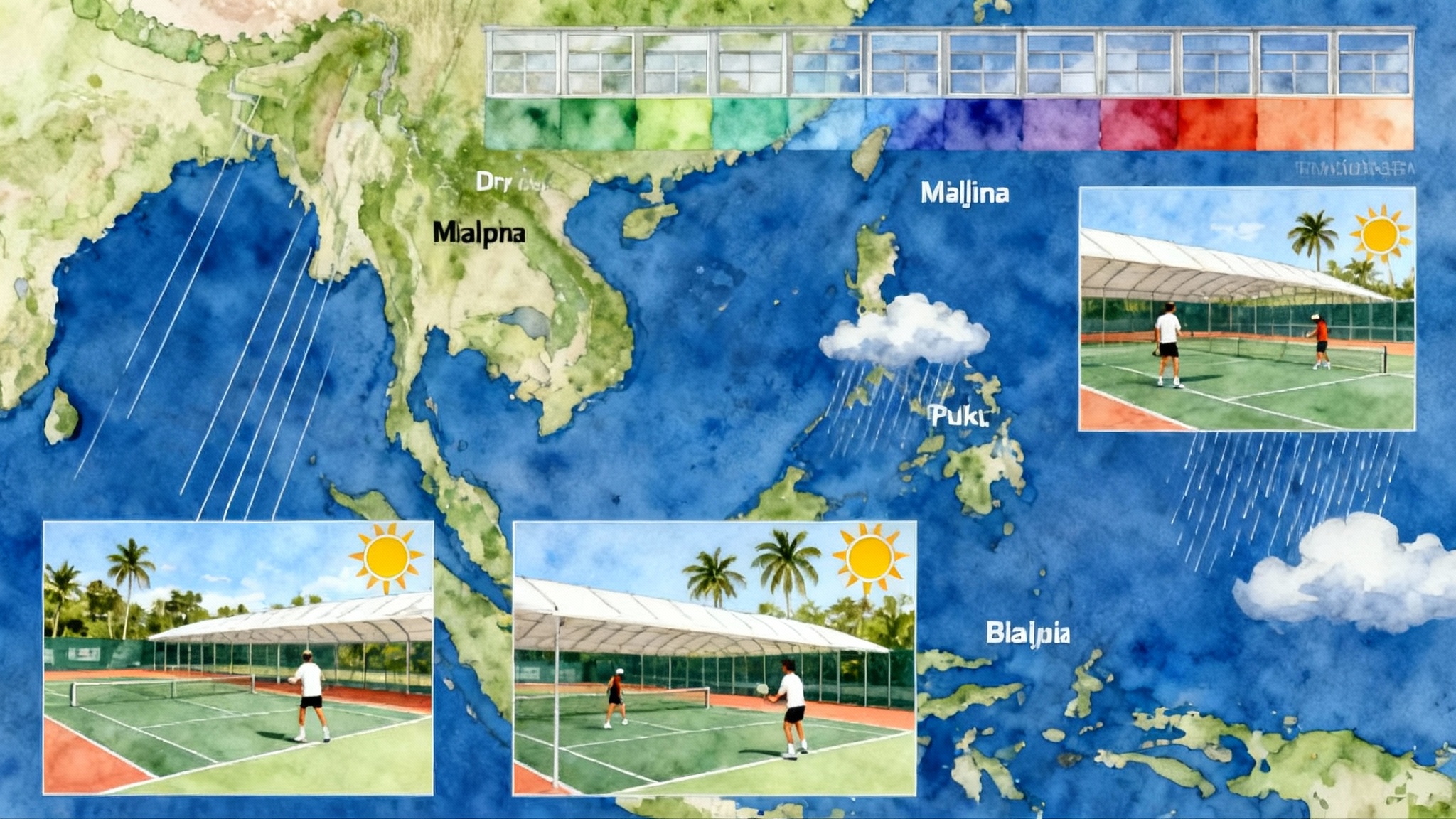
Why a climate-first plan beats guesswork
Southeast Asia can be a world-class tennis classroom if you respect the monsoon. Aim your 2025–26 training blocks at the dry side of the cycle and you can stack two to three daily sessions, resort match play, and tournament tune-ups without weather chasing. Get the months right first, then lock courts, coaching, and competition.
The monsoon made simple
Think of two wind systems trading places across the year. One brings cooler, drier air; the other brings warm moisture from the sea. The shift is predictable enough to plan around, but still spiky with pop-up downpours. Build your blocks inside these typical windows:
-
Manila, Philippines
- Best tennis weather: December to March. Mornings are coolest. April runs hotter and heavier, so start earlier.
- Rainier stretch to avoid for volume training: June to October, with short dry breaks mixed in.
-
Phuket, Thailand
- Best tennis weather: December to April. January and February are the sweet spot for long, reliable dry spells.
- Rainier stretch: May to October, with the heaviest bursts often in September and October.
-
Bali, Indonesia
- Best tennis weather: May to September. December to February typically brings frequent, brief but intense showers. If you want Bali in winter, lean on covered courts and morning starts.
These patterns hold most years, but variability is real. If your block hinges on a tournament or expensive flights, check local advisories in the month before you travel.
Backup indoor and covered options you can actually book
-
Manila
- Manila Polo Club, Makati: 10 covered shell courts plus five outdoor hard courts. Access is by membership or guest introduction; hotel concierges can sometimes assist.
- Tennis in the City, Makati: an air-conditioned, mall-based option for short, weather-proof hits.
- Many public and school venues have roofed, open-sided courts that play dry in light rain and stay cooler at midday.
-
Phuket
- Thanyapura Sports and Health Resort, Thalang: four covered Plexicushion courts and two outdoor courts, with day passes and privates. This is the island’s most dependable rain insurance and an ideal hub for two-a-days.
- Smaller clubs around Bang Tao and Kathu are adding roofed or semi-covered courts. Call ahead; surfaces and lighting vary.
-
Bali
- Liga.Tennis Center and Academy, Sanur and Umalas: multiple courts, several roofed, strong coaching bench, league culture, and easy booking through their app.
- Many resorts maintain one to two courts. Mostly outdoor, often with wind breaks and shade that help during light rain and mid-afternoon heat.
Spotlight: Philippine Tennis Academy in Manila
Base your Manila block around the Philippine Tennis Academy, known for junior pathways and collegiate placements while welcoming ambitious adults for custom sessions. Expect modern progressions, frequent live ball, and a culture that blends discipline with an upbeat courtside vibe. Ask for a block plan that pairs morning technical work with afternoon point play and match set pieces. If you arrive with match goals, bring scouting notes and recent video; coaches can turn goals into a two-week microcycle with measurable checkpoints.
Calendar tie-ins that make the miles count
- International Tennis Federation juniors in Manila: late November into early December 2025 features back-to-back J30 events at Rizal Memorial. Time your arrival to acclimate for five to seven days, then enter the first week and hold the second as a backup. Check dates on the ITF J30 Manila tournament page, then work backward to build your training days.
- Thailand pro and junior weeks cluster around Bangkok and Nonthaburi from late December through January most seasons. Phuket hosts leagues and match nights through the dry months, and Thanyapura often stages weekend events that suit adults and college-bound juniors.
- Universal Tennis events run across the region. For Manila and Bali, density rises during school holidays. Use the UTR app to filter dates and ratings, then slot one match day inside every three-day training slice.
Sample 10 to 14 day blocks
Below are three realistic outlines that balance quality court time, recovery, and real-world weather contingencies.
A. Manila two-week development block
- Day 1: Arrival, easy mobility, 45-minute light hit to adjust. Evening grip rewrap and string check.
- Day 2: Academy technical morning, two hours. Afternoon serves plus +1 patterns, 75 minutes. Short gym.
- Day 3: Live ball morning. Afternoon match play at a guest-friendly club. Scout video for feedback.
- Day 4: Regen swim or light jog. Afternoon doubles with local partners. Night match review.
- Day 5: Drilling with return and transition focus. Afternoon set play with positional goals.
- Day 6: Point construction plus serve patterns. Afternoon off or city recovery.
- Day 7: Practice match day. Two singles sets in the morning, doubles late afternoon. Early night.
- Day 8: Light hit or off; travel buffer if pairing with a weekend junior event.
- Day 9: Technical refresh. Afternoon match play at a covered venue.
- Day 10: Serve and return pressure sets. Gym strength maintenance, 40 minutes.
- Day 11: Practice match day with tiebreak ladder.
- Day 12: Off-court review. Afternoon doubles.
- Day 13: Testing session with fitness benchmarks. String and grip prep for departure.
- Day 14: Departure.
Notes: For rain, move afternoon sets to a roofed court or shift to serve-plus-points under cover. Keep a spare slot on Days 4 or 8 for weather make-good.
B. Phuket 12-day performance block
- Day 1: Arrival. Evening foam roll and 30-minute hit.
- Days 2 to 4: Thanyapura morning drills, two hours. Afternoon group session or match play under cover. One gym across the three days.
- Day 5: Active recovery. Ocean swim or short hike. Evening serves and returns, 60 minutes.
- Days 6 to 8: Morning tactical themes, then set play. Afternoon social doubles at your resort or local club.
- Day 9: Rest half day. Sports massage on site. Hydration focus.
- Days 10 to 11: Test days. Two best-of-three set matches across two days. If humidity spikes, split sets morning and late evening under cover.
- Day 12: Departure.
C. Bali 10-day precision block during shoulder season
- Day 1: Arrival and sleep bank. No high-intensity work.
- Day 2: Liga.Tennis technique session, 90 minutes. Afternoon light hit if dry.
- Day 3: Morning live ball. Afternoon gym and mobility.
- Day 4: Practice match at a resort court. Night video notes.
- Day 5: Roofed court theme day. Serve plus first ball from both wings.
- Day 6: Rain-day plan if needed. Use covered courts for serve baskets and return reps. Add indoor bike or sauna for sweat volume.
- Day 7: Two-set match in the morning. Doubles at sunset.
- Day 8: Recovery and island day. Keep hydration on schedule.
- Day 9: Test set and tiebreak ladder. Pack spare strings and overgrips for travel.
- Day 10: Departure.
Costs you can expect in 2025–26
-
Court time per hour
- Manila: 10 to 25 USD on public or school courts; higher at premium clubs with guest fees.
- Phuket: 20 to 40 USD, with resort premiums at peak hours. Day passes at multi-sport facilities add value if you also swim or lift.
- Bali: 12 to 30 USD depending on venue and whether the court is roofed.
-
Coaching
- Private: 35 to 90 USD per hour depending on coach seniority and venue.
- Group sessions: 12 to 25 USD per person for 60 to 90 minutes.
-
Stringing and balls
- String jobs: 10 to 25 USD for synthetic gut or polyester. Bring two reels if you are picky about feel.
- Balls: 3 to 7 USD per can. Stock up on day one to avoid late-night supply hunts.
-
Day passes and recovery
- Performance resorts with covered courts often bundle courts, pool, sauna, and gym into a 15 to 35 USD day pass. If you plan two-a-days, this usually beats piecemeal bookings.
-
Getting around
- Ride hailing is inexpensive in all three locations. Budget 3 to 10 USD per typical intra-city ride. In Phuket and Bali, many players prefer resort shuttles or prebooked drivers on heavy training days.
-
In-region flights
- Manila to Phuket or Bali can swing widely with season. Expect 150 to 350 USD one way if booked 30 to 45 days out. Nonstop options are limited, so price in connection buffers.
Visas and entry rules in one place
-
Thailand: as of mid-2025, many nationalities including United States passport holders can enter visa-exempt for stays up to 60 days for tourism. A digital arrival form may be required. Always verify the latest rules with the embassy before you book.
-
Philippines: United States passport holders typically receive visa-free entry for 30 days under long-standing policy, with the option to extend in country. Former Filipino citizens may qualify for a one-year visa-free privilege under the Balikbayan program when traveling with qualifying family members.
-
Indonesia and Bali: most visitors choose a 30-day Visa on Arrival, with an electronic version available before travel. Bali also collects a small tourism levy. Use official government portals, apply at least 48 hours before departure if you want the electronic visa, and keep a copy of your receipt for the airport. If you prefer to pre-apply, use the official Indonesia e-VOA portal.
Month-by-month picks for 2025–26
-
November 2025
- Manila: good. Build an acclimation week heading into late November junior events.
- Phuket: warming up for peak season. Good for doubles-heavy social weeks.
- Bali: early wet season. Keep sessions in the morning and use roofed courts after lunch.
-
December 2025 to February 2026
- Manila: prime. Coolest mornings, low rain frequency, and a deep sparring pool.
- Phuket: prime. Lock covered courts for the occasional passing shower and you will barely miss a hit.
- Bali: wettest stretch. If you love Bali during the holidays, make it a skills-and-serves block under cover and save your match block for spring.
-
March to April 2026
- Manila: still solid in March. Heat builds in April; start earlier and lengthen breaks.
- Phuket: still strong through April.
- Bali: improving fast. April is a great time to shift from drills to matches. Prefer a Japan spring block? See our Tokyo and Yokohama spring tennis guide.
Gear and training tweaks for heat and humidity
-
Strings and tension
- Polyester loses feel faster in heat. Drop tension by 1 to 2 kilograms or 2 to 4 pounds to keep dwell time comfortable.
- Pack enough sets to restring every 6 to 8 hours of heavy poly hitting. If you play multi or synthetic gut, plan 10 to 12 hours per job.
-
Grips and hands
- Bring two overgrips per session. Keep a small rosin bag and a microfiber towel in a zip pouch courtside.
-
Hydration and salts
- Aim for 600 to 800 milliliters of fluid per on-court hour, with 400 to 700 milligrams of sodium per liter. If you cramp easily, use a higher-sodium mix on afternoon hits and bring a second bottle of plain water.
-
Sun and skin
- Light long-sleeve top, hat with dark underbill, zinc-based sunscreen on nose and cheeks, and sunglasses for toss tracking on cloudless days.
-
Recovery and sleep
- Put your biggest hit in the morning, your second session near sunset. Use cool showers, a short walk, and early lights-out to bank sleep in the first 72 hours after landing.
Booking timeline for a stress-free block
- 90 days out: set dates, pick your city by weather window, and pencil a second city if you plan a two-stop trip. Check academy availability and tentatively hold two-hour daily slots.
- 60 days out: book flights. If traveling to Thailand, recheck current arrival form requirements. If your path includes Indonesia, decide between electronic visa on arrival and airport purchase, then apply online if you prefer the electronic route via the official Indonesia e-VOA portal.
- 30 days out: confirm resort match nights or league play. Prepay string packs and grips for pickup on arrival if your venue has a pro shop.
- 14 days out: set session objectives and testing metrics. Example: first-serve percentage, forehand depth percentage to two deep zones, and a standard tiebreak ladder score to repeat on Days 7 and 11.
- 7 days out: acclimation plan locked. Pack two bottles, light towels, salts, zinc sunscreen, and a spare pair of shoes.
A smarter winter than Florida or Spain
Florida and Spain are great when you want familiar schedules and surfaces. Southeast Asia is better when you want volume, variety, and a richer match menu at attractive price points. If you prefer a U.S. warm-weather base, compare with our Indian Wells-Palm Desert winter guide. The monsoon is not a barrier; it is the calendar. Respect it, plan around it, lean on covered courts when you need to, and your 2025–26 block in Manila, Phuket, or Bali will deliver more good reps and better matches than any winter trip you have taken.
One more Manila resource
If you want a development-led hub with clear pathways, start your planning with the Philippine Tennis Academy, then layer in UTR match days and covered-court insurance.
